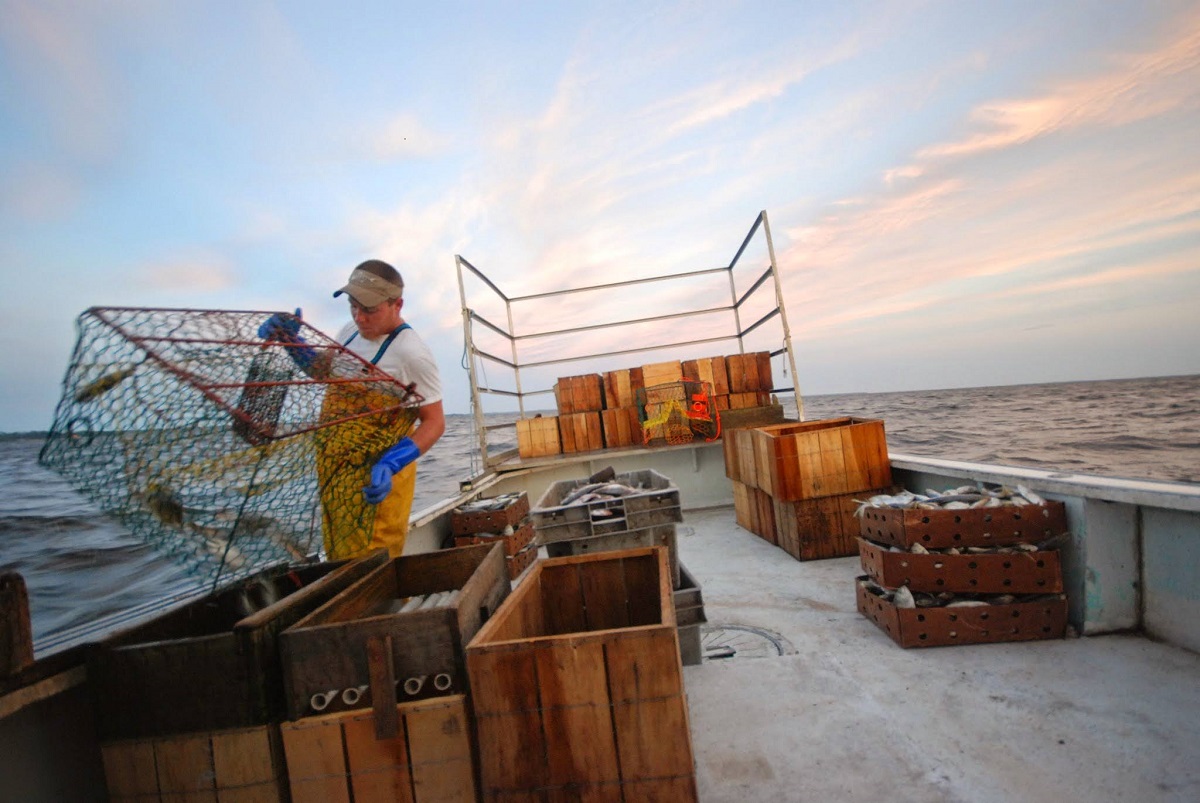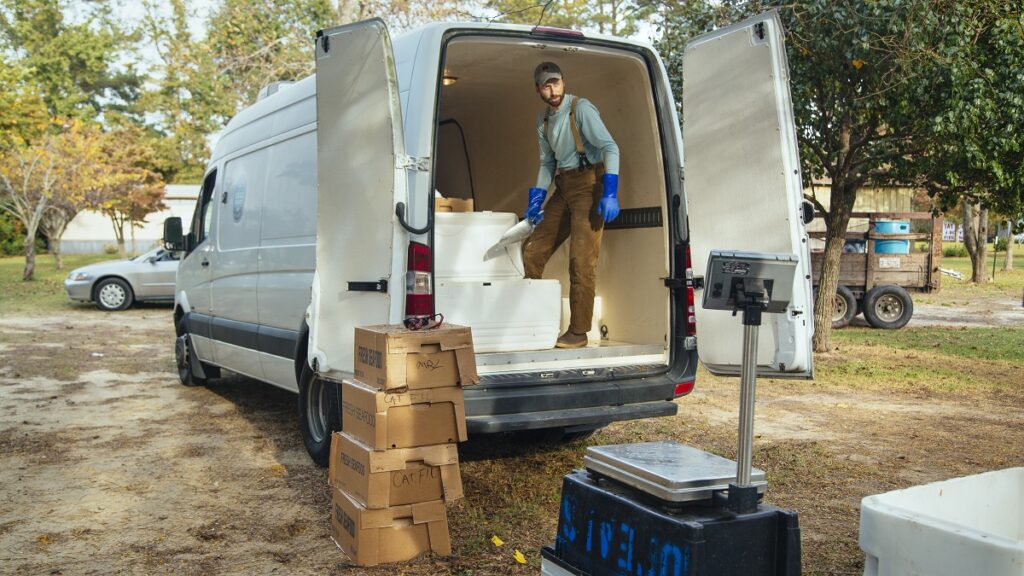Two guys, a van, and a cooler full of North Carolina fish: The story of Locals Seafood
- by bonappetit

Fishing off the North Carolina coast
Sheepshead. Ribbonfish. Wahoo. Tilefish. When North Carolina native Ryan Speckman was living on the Outer Banks of North Carolina in the late 2000’s, he and his friends feasted on these native seafood species regularly. He wondered why, when he was growing up in the inland part of the state, he’d never encountered fish from the Carolina coast before – and most residents hadn’t either. From this disconnect, Locals Seafood was born.
In 2010, Ryan called his college buddy Lin Peterson with the idea of bringing North Carolina seafood to more North Carolinians, and the two started building a network of fishermen and offering their product to consumers in the Triangle region, where a local food movement was well underway. They started humbly, selling fish out of the back of their van on the weekends.
In the past 13 years, Lin and Ryan have grown the business to include a 10,000-square-foot facility, a fleet of nine refrigerated vehicles, and two restaurants, along with various other retail and wholesale markets. Bon Appétit has been part of that growth. In 2015, Locals was awarded a Farm to Fork grant, which Speckman used to build a walk-in cooler. And our cafes at SAS, a software analytics company based in Cary, NC have been loyal to Locals since the early days, as well.
“It’s always exciting to get the Locals’ seafood availability list each week” says SAS executive sous-chef Bryan Little, who grew up fishing on the North Carolina shores.
“Bringing a variety of different seafood into our kitchen that is caught right here off the coast of North Carolina is not only a great way to provide our guests with the freshest product, but it also allows us to display and educate our client on the many varieties of fish that are right here in our waters,” says Bryan. “To me, it’s the ideal expression of our commitment to the local food systems.”
“We got to know SAS early on,” says Lin. “It was a big deal when we got that order for 100 pounds of fish every Wednesday,” he remembers. “In the early days we’d be scrambling to make sure we could fill it.”
Tracing Fish to the Source
When they first started, says Lin, learning first-hand about the seafood supply chain was an early eye-opener for the business partners. “The system was really broken,” he says. Often, he explains, seafood landed on the North Carolina coast is trucked up north to the larger markets in Boston and New York or destined for export. “By the time the fish gets up north,” says Peterson, consumers “have no idea where it’s from.”
By contrast, traceability is a core value for Locals. The company knows where the fish came from, when it came out of the water, and how it was caught. This knowledge underscores the strength of their relationships with fishermen, the freshness and quality sought after by chefs and consumers, and the ecological impact related to catch methods that’s critical to long-term sustainability of the resource.

Locals Seafood co-founder Ryan Speckman at work.
More North Carolina Seafood for More North Carolinians
It’s a challenging time for the type of community-scale fishermen in the U.S. that Locals works with. Gentrification is putting pressure on working waterfronts. The average age of a fishing boat captain is 55 and it’s increasingly difficult to get started in the industry. Competing marine interests, like offshore wind and offshore aquaculture, have the potential to disrupt wild-capture fisheries, and climate change is already causing turbulence and unpredictability in the ocean.
Locals and companies like it, such as our partners Red’s Best in Boston, help give community-scale fishermen an advantage in this challenging landscape (or seascape?). With a focus on educating the public about the diversity and seasonality of seafood available in North Carolina waters, Locals plays a role in connecting state residents to more of the foods from their region. And by linking the seafood with the people and places where it was caught, they can tell a North Carolina story and boost the value of those products.
That helps keep local fishermen fishing and feeding their communities and strengthens the state economy generally. “Fishermen are excited that their products are making it into local economies, keeping more of the money at home instead of leaving the state,” says Lin.